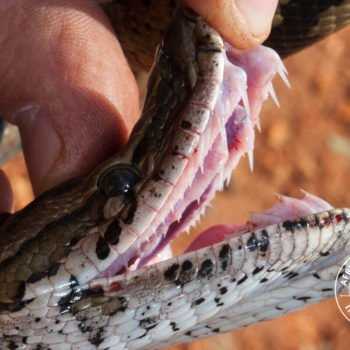
It is also worth noting that ball pythons have a relatively small mouth compared to other snake species. This means that their bites are typically not very severe, especially if they are not fully grown. However, it is still important to take precautions to avoid being bitten.
Are Ball Pythons Aggressive?
One common question many people have about ball pythons is whether they are aggressive. The answer to this question is generally no, ball pythons are not aggressive by nature.
While ball pythons are generally not aggressive, they may become defensive if they feel threatened or cornered. Like any animal, they have natural instincts to protect themselves when they perceive a threat. When a ball python feels threatened, it may hiss, flatten its body, or even bite as a defensive response.
If a ball python does bite, it is often a result of handling or husbandry mistakes on the part of the owner. Improper handling techniques, such as moving too quickly or being too rough, can cause a ball python to feel threatened and potentially bite. Mistakes in husbandry, such as inconsistent or improper feeding, can also lead to a ball python feeling stressed or hungry, which may increase the likelihood of a defensive bite.
Common Reasons for Ball Python Bites
Ball pythons, like any other snake, have the ability to bite. While they are generally docile and will not bite without reason, there are certain circumstances that can provoke a bite.
1. Fear or Threat
One common reason for ball python bites is fear or feeling threatened. Snakes are naturally cautious creatures and may bite if they feel cornered or in danger. This is more likely to occur when handling the snake improperly or if the snake is not accustomed to human interaction.
2. Stress
3. Hunger or Mistaken Identity
Although rare, ball pythons may bite if they are hungry and mistake a hand or finger for prey. It is crucial to never handle your snake after feeding or while smelling like food, as this can trigger their feeding response.
Additionally, if you have recently handled rodents or other potential prey items without washing your hands thoroughly, the scent may transfer to your skin, causing the snake to bite in a case of mistaken identity.
4. Overhandling
Overhandling, or handling your ball python too frequently or for extended periods, can also lead to bites. Like any animal, ball pythons need their space and time to rest and recover. Constant handling can cause stress and discomfort, increasing the likelihood of defensive behavior.
5. Health Issues
In some cases, ball pythons may exhibit defensive behavior due to underlying health issues. If a normally docile snake suddenly becomes aggressive and starts biting, it is recommended to consult a veterinarian to rule out any potential health problems.
Do Ball Pythons Bite when They are Hungry?
However, it is worth noting that hunger can be a contributing factor to a ball python’s likelihood of biting. When a snake is hungry, its natural instincts kick in and it may become more defensive or aggressive. This can manifest as biting, especially if the snake feels threatened or if it mistakes your hand or fingers for food.
How to Prevent Ball Python Bites
When handling a ball python, there are measures you can take to prevent bites. While ball pythons are generally docile and unlikely to bite, it’s always important to exercise caution and handle them properly to minimize the risk of any accidents.
1. Proper Handling Technique
One of the main reasons ball pythons may bite is due to improper handling. It’s crucial to understand the proper technique to hold and handle your ball python. Always support their body with both hands and avoid squeezing or putting unnecessary pressure on them. Ball pythons are sensitive creatures, and mishandling them can cause stress or prompt them to bite.
2. Regular Handling Sessions
Regularly handling your ball python can help them become accustomed to human interaction and decrease the likelihood of biting. Start with short sessions and gradually increase the duration as your snake becomes more comfortable. This will help your ball python acclimate to being handled and reduce their stress levels.
3. Provide a Secure and Stress-Free Environment
Ensuring your ball python’s enclosure is properly set up and maintained is essential. A secure and stress-free environment will help keep your snake calm and reduce the likelihood of them biting. Provide hiding spots, appropriate temperature and humidity levels, and a clean enclosure to promote a content and healthy snake.
4. Avoid Disturbing Your Ball Python During Feeding or Shedding
5. Recognize Warning Signs
Learning to interpret your ball python’s body language is crucial in preventing bites. Be observant and understand cues that indicate your snake is feeling threatened or stressed. Defensive postures, hissing, or striking motions are all warning signs that your ball python may be on edge. If you notice any of these behaviors, it’s best to avoid handling them until they have calmed down.
6. Do Not Handle Your Ball Python When It’s Agitated or Restless
By following these guidelines, you can minimize the chances of being bitten by a ball python. Remember to always approach handling with care, patience, and respect for your snake’s individual temperament.
Ball Python Handling Safety Tips
| Tip 1: | Always wash your hands before and after handling a ball python. This helps to reduce the transfer of any potential bacteria or parasites. |
| Tip 2: | Approach the snake calmly and confidently. Sudden movements or hesitation can make the snake feel threatened and increase the chances of a bite. |
| Tip 3: | Do not handle a ball python when it is shedding its skin or during feeding time. These are times when the snake may be more agitated or defensive. |
| Tip 4: | Support the snake’s body properly and avoid squeezing or gripping it tightly. This helps the snake feel secure and reduces the likelihood of it biting out of stress. |
| Tip 5: | Avoid handling a ball python if you are feeling unwell or if you have any open wounds on your hands. Snakes have a heightened sense of smell and may become more aggressive in such situations. |
| Tip 6: | Always have a spotter or someone nearby when handling a ball python, especially if you are a beginner. This ensures that there is help available in case anything goes wrong. |
| Tip 7: | Never handle a ball python by its head or attempt to grab it from above. This can mimic predatory behavior and may trigger a defensive response. |
| Tip 8: | If the ball python shows signs of agitation or stress, such as hissing or coiling into a defensive position, it is best to leave it alone and try again later. |
| Tip 9: | Always supervise children when they are handling a ball python. Teach them the importance of being gentle and respectful towards the snake. |
| Tip 10: |
By following these safety tips, you can have a positive and enjoyable experience handling your ball python while minimizing the risk of bites.
What to Do if You are Bitten by a Ball Python
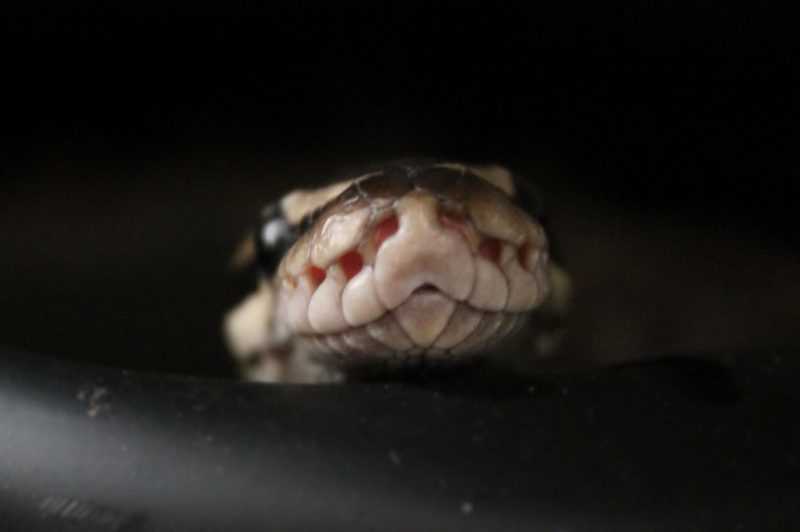
1. Stay Calm:
Getting bitten can be a frightening experience, but it’s essential to remain calm. Panicking may lead to more agitation in the snake and increase the likelihood of a more severe bite. Take a deep breath, stay still, and try to relax your muscles.
2. Do Not Pull or Yank:
3. Use Warm Water:
After removing the snake from your hand, wash the bite area thoroughly with warm, soapy water. This will help prevent infection and remove any bacteria that may have been introduced by the snake’s mouth.
4. Apply Antiseptic:
Once the area is clean, apply an antiseptic ointment or solution to the bite wound. This will further protect against infection and promote healing.
5. Monitor for Symptoms:
Keep a close eye on the bite wound for any signs of infection or unusual symptoms such as redness, swelling, pain, or pus. If you notice any of these, consult a healthcare professional immediately.
6. Seek Medical Attention if Necessary:
If the bite is deep, severe, or shows signs of infection, it’s essential to seek medical attention. A healthcare professional can evaluate the wound, provide appropriate treatment, and prescribe antibiotics if necessary.
Remember, ball python bites are relatively rare, and most bites are minor and do not cause any severe harm. By following these steps and taking proper care of the wound, you can ensure a speedy recovery. Always handle your ball python with care and respect to minimize the risk of bites in the future.
Ball Python Bite Symptoms
1. Puncture Wounds
One of the most obvious symptoms of a ball python bite is the presence of puncture wounds on the affected area. The bite marks will typically consist of two parallel rows of small incisions caused by the snake’s teeth. These wounds may bleed slightly and could be painful.
2. Swelling
After a ball python bite, it’s common for the affected area to swell. This is the body’s natural response to an injury and inflammation. The swelling is usually mild to moderate and may be accompanied by redness and warmth around the bite marks.
3. Pain and Discomfort
The puncture wounds caused by a ball python bite can be painful, especially immediately after the incident. The level of pain experienced may vary depending on the individual’s pain tolerance and the severity of the bite. Discomfort may persist for several hours or even days after the bite.
4. Infection
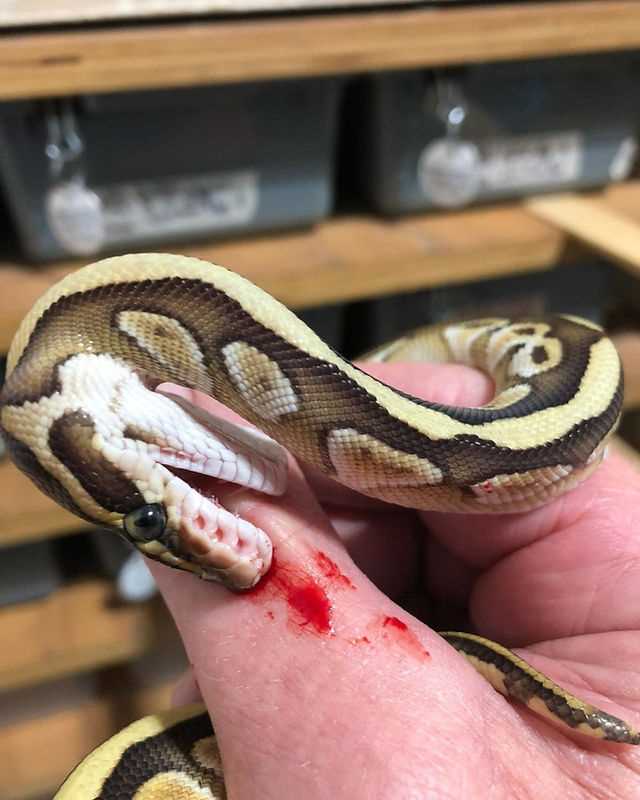
5. Hypersensitivity Reactions
How to Treat a Ball Python Bite
- Stay Calm: Despite the initial shock or pain, it is crucial to remain calm and avoid making any sudden movements. This will help minimize the risk of further injury.
- Assess the Bite: Take a close look at the bite to evaluate its severity. If the bite is minor with superficial wounds, you can proceed with at-home treatment. However, if the bite is deep or causes excessive bleeding, seeking medical attention is recommended.
- Apply an Antiseptic: After cleaning the wound, apply an over-the-counter antiseptic ointment to prevent infection. Be careful not to use any products that are toxic to reptiles, as ball pythons have sensitive skin.
- Monitor the Bite: Keep a close eye on the bite over the next few days. Watch for signs of infection, such as increasing redness, warmth, swelling, or pus. If any of these symptoms develop, seek medical attention immediately.
Remember, if you are uncertain about the severity of the bite or if it shows signs of infection, it is always best to consult with a healthcare professional. They can provide proper medical advice and treatment based on your specific situation.
When to Seek Medical Attention for a Ball Python Bite
If you or someone you know has been bitten by a ball python, here are some guidelines to determine when medical attention is necessary:
1. Deep or severe bites:
If the bite has caused significant bleeding, puncture wounds, or if the snake has not let go after biting, it is essential to seek medical attention immediately. Deep bites may require stitches or other medical procedures to properly treat the wound and prevent infection.
2. Allergic reactions:
If you or the person bitten experience symptoms of an allergic reaction, such as difficulty breathing, swelling, hives, or dizziness, it is crucial to seek immediate medical attention. Ball python bites can trigger allergic reactions in some individuals, and prompt medical intervention is necessary to prevent further complications.
3. Infection:
4. Tetanus vaccination status:
If you are unsure about your tetanus vaccination status or it has been more than ten years since your last vaccination, it is advisable to seek medical advice. Snake bites can introduce bacteria into the body, and tetanus immunization helps prevent tetanus infection, a potentially life-threatening condition.
Remember, even if a ball python bite appears minor, it is always best to err on the side of caution and seek medical assistance when in doubt. A healthcare professional can assess the wound, provide appropriate treatment, and offer guidance on proper wound care to prevent complications and ensure a speedy recovery.
Can Ball Python Bites be Fatal?
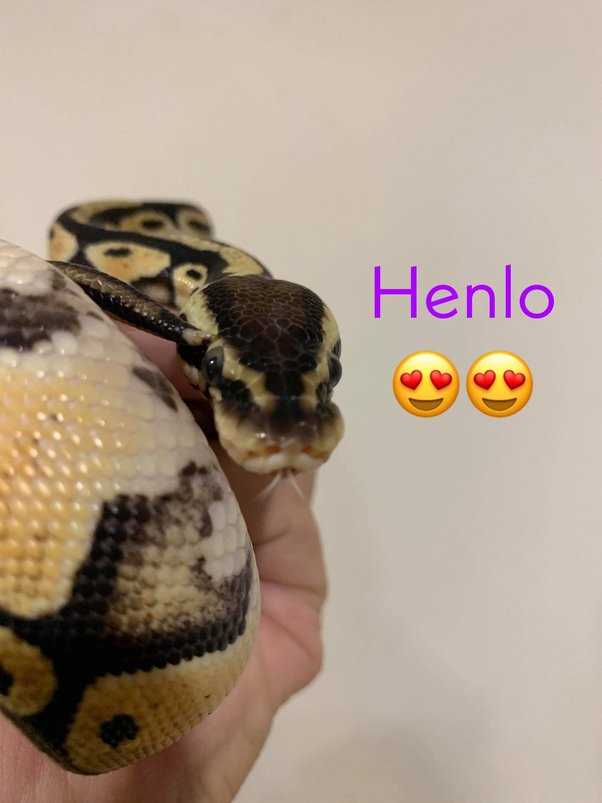
Overall, while ball python bites are not typically fatal, it is still important to take proper precautions when handling these snakes. Always handle them with care and respect their natural behavior and instincts. By doing so, you can minimize the risk of being bitten and ensure a safe and enjoyable experience with your ball python.
Are Ball Pythons Bred to be Less Aggressive?
Breeders have been able to achieve this by selectively breeding ball pythons with calmer temperaments. These specific behaviors are then passed down to future generations, resulting in ball pythons that are generally less aggressive.
| Advantages of Breeding for Less Aggression | Disadvantages of Breeding for Less Aggression |
|---|---|
|
|
While selective breeding for less aggression has its advantages, it also comes with some disadvantages. Loss of genetic diversity can make the population more susceptible to certain health issues. Additionally, breeding for specific traits may result in the loss of natural behaviors that are important for the snake’s overall well-being.
Can Ball Pythons Learn not to Bite?
Ball pythons have their own unique personalities just like any other animal. Some individuals may be naturally more inclined to bite, while others may be more docile. However, with consistent and gentle handling, almost any ball python can be trained to be less aggressive and less likely to bite.
One effective technique for training a ball python not to bite is desensitization. This involves gradually exposing the snake to different stimuli that may typically trigger biting behavior, such as being touched on the head or picked up from their enclosure. By gradually introducing these stimuli and rewarding the snake with treats or positive reinforcement when it remains calm and doesn’t bite, the snake can learn that these actions are not threatening.
Training Tips to Prevent Ball Python Bites:
- Handle your ball python regularly to build trust and establish a positive relationship.
- Use slow and deliberate movements to avoid startling the snake.
- Introduce the snake to different stimuli gradually and reward calm behavior.
- Avoid sudden or aggressive movements that may startle the snake.
- Approach the snake with respect and caution.
Ball Python Bite Statistics
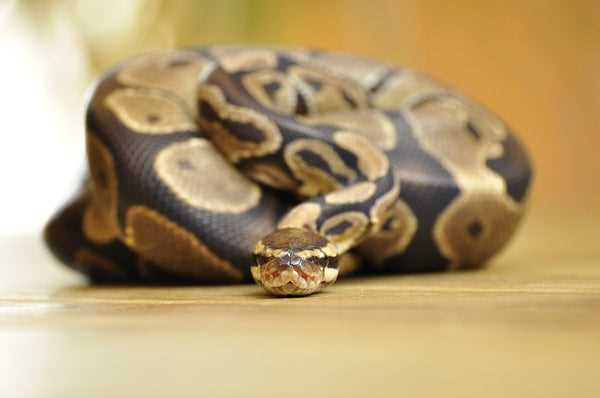
It’s difficult to determine an exact number of ball python bites, as not all incidents are reported. However, from the available data, it’s clear that the instances of bites are relatively low. This is likely due to the fact that ball pythons are generally well-tempered and do not pose a significant threat to their owners.
Ball Python Bite Statistics
Most ball python bites are minor and do not cause serious harm. The snakes typically strike and release rather than holding on and coiling, resulting in superficial punctures. These bites are usually not severe enough to require medical attention and can be treated with basic first aid.
When looking at ball python bite statistics, it is also important to consider that bites can occur due to human error or negligence. Rough handling, startling the snake, or mishandling during feeding or cleaning can increase the likelihood of a bite.
To prevent ball python bites, it is crucial to handle them gently, respect their boundaries, and not provoke or startle them unnecessarily. It is also essential to provide a suitable enclosure with the proper temperature, humidity, and hiding spots to ensure the snake feels secure and comfortable.

I’m Lena Adams—a product of an unconventional upbringing in the African wilderness. My father, a daring explorer of African wildlife, sparked my fascination with reptiles, a passion that intertwined with the tragic loss of my mother during an expedition, leaving an indelible mark on my life. Driven to understand the creatures that captivated my parents, I embarked on my journey, sharing insights about reptiles, frogs, and lizards on my website. Through my explorations and conservation efforts, I honour my family’s legacy while seeking connections—to the creatures, nature, and the mother whose presence I yearn to understand.
